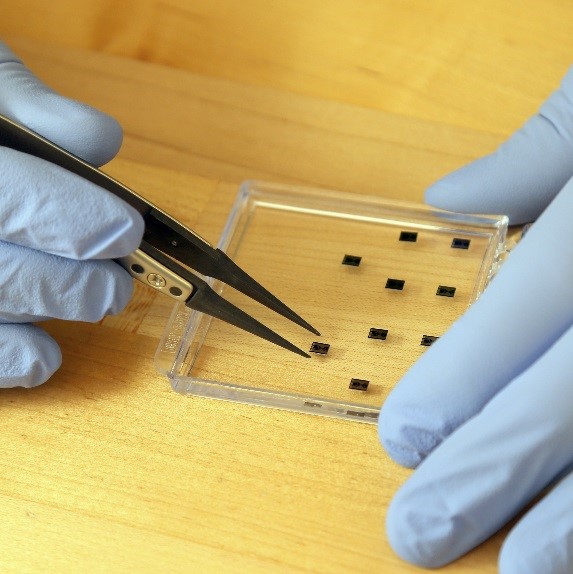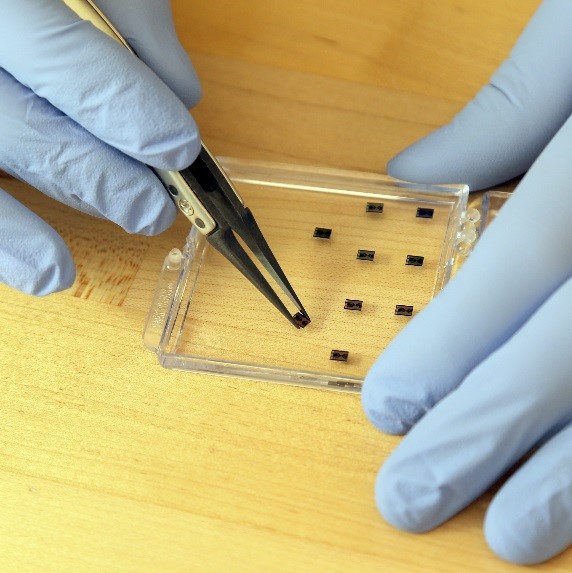- Home
- Handling Guide
Handling Guide
Categories
Removing your chip from its storage case
We recommend that you remove chips from their storage boxes using carbon-fiber tipped tweezers (PN 2066), which are included in the standard accessory kit that accompanies each Hummingbird Scientific holder. To break the surface tension holding the chips in place, gently grip the sides of the chip with your tweezers, push down into the gel pack, twist the chip slightly, and lift up.


Remove chips from the box and re-close the lid as quickly as possible to avoid contamination. If you are having trouble picking up a chip, wedge a tweezer tip under the bottom edge of the chip and gently lift. Alternatively, you can hold the gel-pak on the edge of a table and gently bend it at the chip while twisting slightly with the tweezers.


If you need to return a chip to its case, place the chip away from the edge of the gel-pak and gently push down on the gel while depositing the chip. You may need to place the chip on a clean portion of the gel rather than one that’s been intended by the tweezers in order to maximize surface tension.
Handling your chip
Our chips are designed to be resilient to the conditions in the TEM chamber, but they can be easily damaged by improper handling outside the TEM. Note that our chips are stored with pin pads and windows facing up. As a result, you must flip the top chip over before placing it in order to form a functioning environmental cell. Please refer to your holder owner's manual for more information about chip handling and assembly.
Cleaning your chip
Our chips are packaged in a clean room and do not need to be cleaned when they first arrive. If they come in contact with contaminants after arrival, you can remove larger particles by blowing nitrogen gas parallel to the surface of the chip. For non-functionalized chips, you can also remove organic matter such as greases by swirling the chip in HPLC-grade acetone, HPLC-grade methanol, DI water, and HPLC-grade ethanol in succession. You should use nitrogen gas to evaporate any residue and inspect chips under an optical microscope for cleanliness and window integrity. NOTE: this procedure should only be used for very dirty chips, since it can damage chips that are already clean.
We also recommend plasma cleaning for all unfunctionalized chips to remove molecular organic layers on their surface. If you are using a liquid system, this process also makes the surface hydrophilic. It’s best to plasma clean both chips, not just the one on which you're preparing the sample.
Storage
Chips should be stored in a dry and low-particulate environment. Functionalized chips should be stored in the fridge to extend their shelf life.
Reordering
You can reorder chips, browse our full catalog of chips and accessories, or order custom chips online at store.hummingbirdscientific.com.
Your satisfaction is important to us. If you have any concerns about your purchase, please contact us:
chipsales@hummingbirdscientific.com · +1 (360) 252-2737
 Loading... Please wait...
Loading... Please wait...
